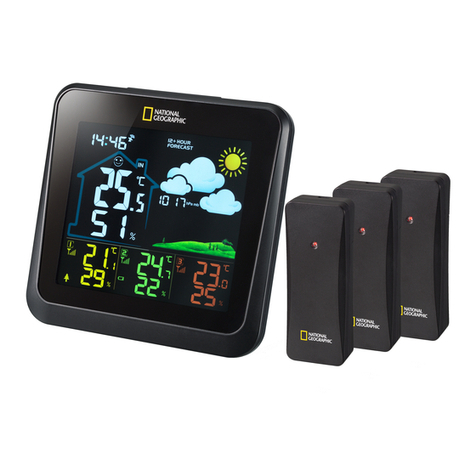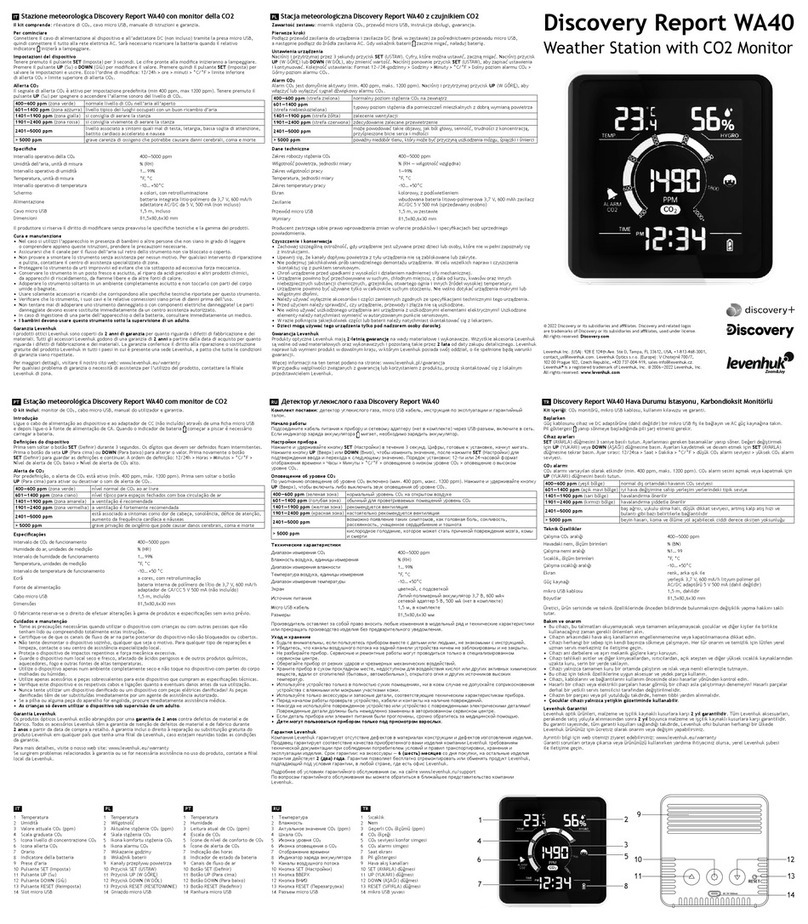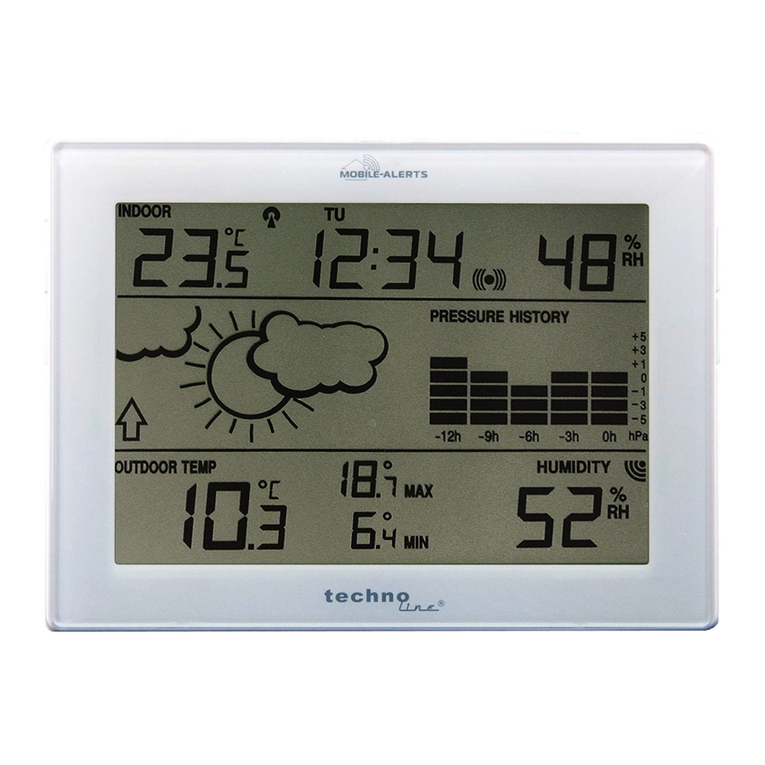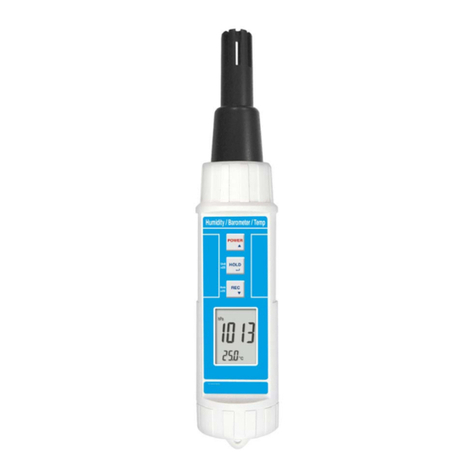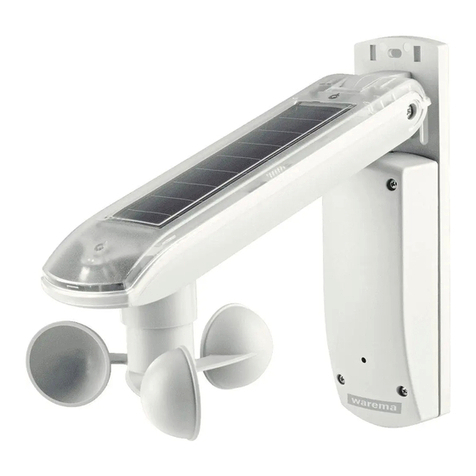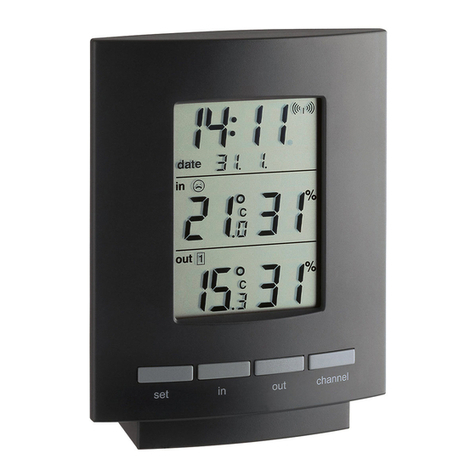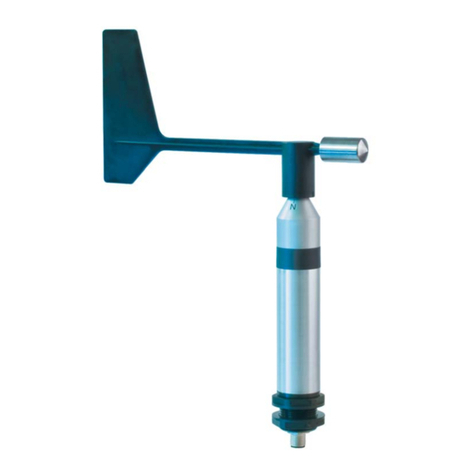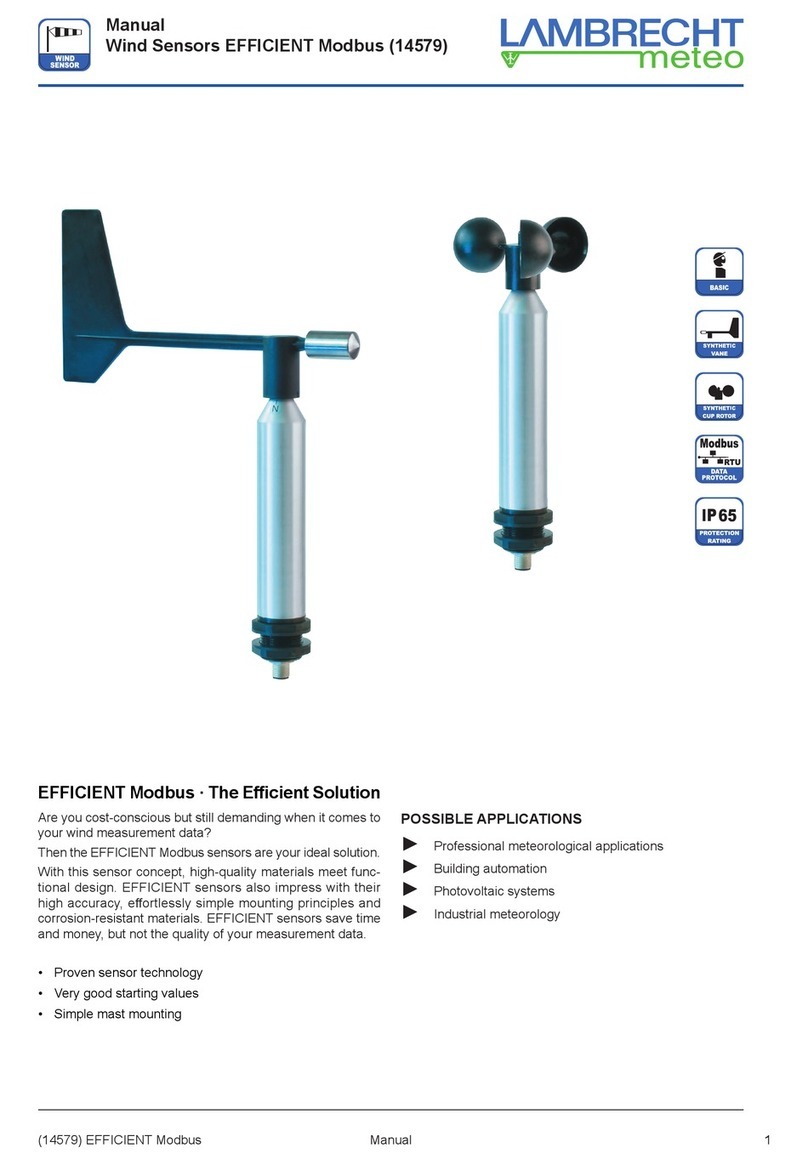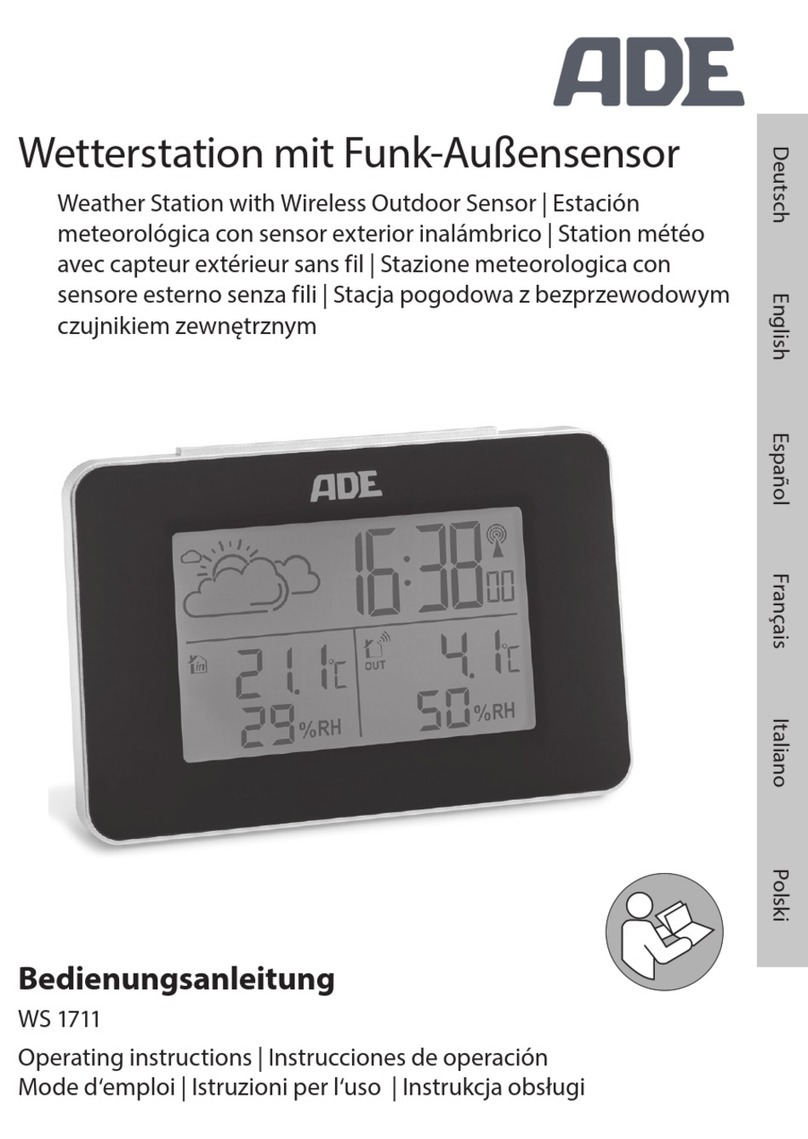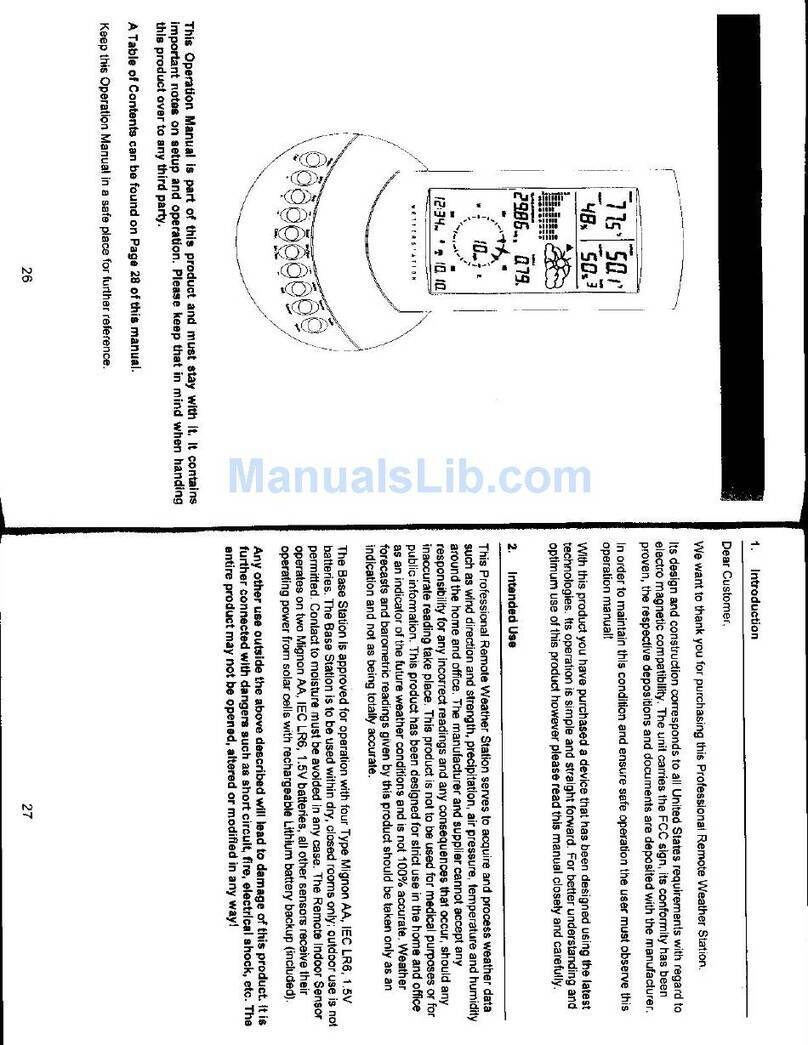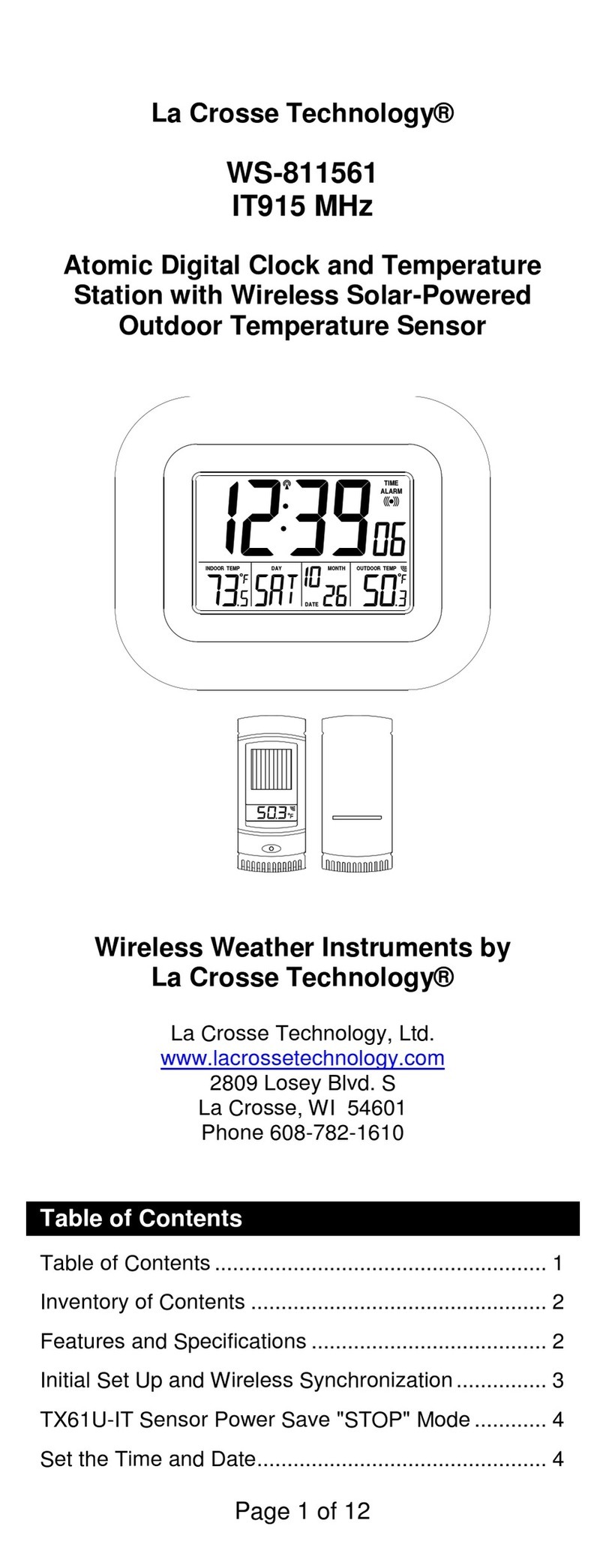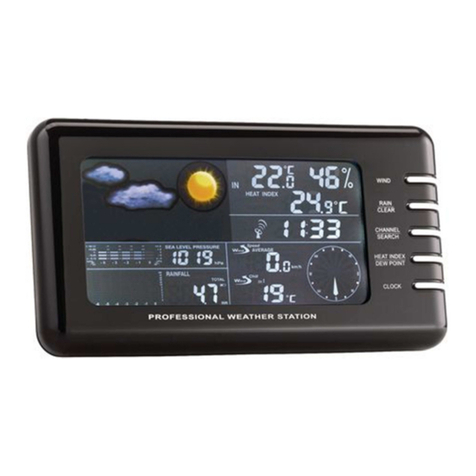
Manual
Static Weather Sensor EOLOS-IND
(1643) EOLOS-IND Manual
1 Introduction
The sensors of the EOLOS family are very robust, compact
and extremely reliable. When developing these sensors
particular consideration has been given to highest quality for
fulllment of meteorological requirements.
The sensors embody the experience of more than 150 years
of development and production of Lambrecht sensors.
The system acquires the horizontal air ow and processes
the measuring data to the meteorological parameters wind
speed and wind direction. Furthermore the weather-module of
the EOLOS-IND acquires the meteorological parameters air
temperature, relative humidity and barometric pressure. Based
on the measured data EOLOS-IND calculates the dew point
temperature and provides for its serial output along with the
measuring data.
EOLOS-IND disposes of a pulse input point for connecting the
LAMBRECHT precipitation sensors (15189).
The sensors and further system components are mounted in
a splash water- and dust proof metal housing.
The measuring data are automatically transmitted via se-
rial interface RS-422 in talker mode, when power supply is
switched on.
Due to their shock- and vibration proof construction the sen-
sor EOLOS-IND is particularly qualied for use under severe
environmental conditions. The housing is made of anodized
seawater resistant aluminium.
An electronically controlled heating device enables the sen-
sor to operate in between the wide range of -40 up to 70 °C.
1.1 Warranty advices
Please note the loss of warranty and non-liability by unau-
thorised manipulation of the system. You need a written
permission of the LAMBRECHT meteo GmbH for changes
of system components. These activities must be operated
by a qualied technician.
The warranty does not cover:
1. Mechanical damages caused by external impacts (e. g.
icefall, rockfall, vandalism).
2. Impacts or damages caused by over-voltages or elec-
tromagnetic elds which are beyond the standards and
specications in the technical data.
3. Damages caused by improper handling, e. g. by wrong
tools, incorrect installation, incorrect electrical installation
(false polarity) etc.
4. Damages which are caused by using the device beyond
the specied operation conditions.
1.2 Advantages of the static measuring principle
The sensor EOLOS-IND is a modern system to carry out pre-
cise and reliable measurements under hardest application and
environmental conditions. The wind measurements take place
according to the principle “TAV“ (thermal aura eld variation),
i. e. static, without moving parts.
Static measuring principle for wind measurements means:
• Determination of data works without moving measuring
elements, i.e. none abrasion, least maintenance and none
recalibration because of this method.
• The wind parameter can be measured also in winter time
accurate and precise, because of the electronic controlled
heating for the immovable measuring elements. This
heating is particularly eective against ice and snow in all
climatic zones.
• Lightweight mass and immovable measuring elements to
enable very low starting values, distance- and attenuation
constants as well as a very high repetition accuracy.
• The sensor rapidly can be installed. Due to the special
measuring principle minor changes from the angle of pitch
can be disregarded.
Advantages of the sensor:
• Apart from the sensors for wind speed and direction the
compact housing also contains built-in sensors for air
temperature, relative humidity and barometric pressure.
• EOLOS-IND oers connectivity for Lambrecht precipitation
sensors (15189)
• The built-in test function of the station, enabled by the
tight integration of the meteorological sensors into the
enclosure, can perform cyclic self-testing and notify the
user of erroneous data or failure.
• The compact design of this sensor with 5 meteorological
parameters is eliminating the traditional cabling and instal-
lation work signicantly. Distribution boxes, power supply
units and other accessories can be reduced to a minimum
expense.
2 Setting to work
Wind can be represented by a vector quantity. For a complete
description of the wind it is necessary to specify its speed
and direction. The two components are subject to spatial and
temporal variations; thus, strictly speaking, they are valid only
for the site where the measuring instrument is installed. We
therefore recommend selecting the place of installation very
carefully.
2.1 Installation conditions
2.1.1 Generally
For professional wind measurements according to meteoro-
logical standards (e. g. VDI 3786, Part 2) location and height
of the wind sensor are important for representative and ac-
curate results. Generally, wind measuring instruments should
not measure the specic wind conditions of a limited area,
but indicate the typical wind conditions of a wider area. To
obtain results which are representative for a wider area and
comparable to values measured at dierent places, the sen-
sor must not be mounted under the lee of higher obstacles.
The distance to any obstacle should be at least 10 times the
obstacle‘s height (corresponding to the denition of an undis-
turbed area). In general a measuring height of 10 m above
ground is regarded ideal.
2
